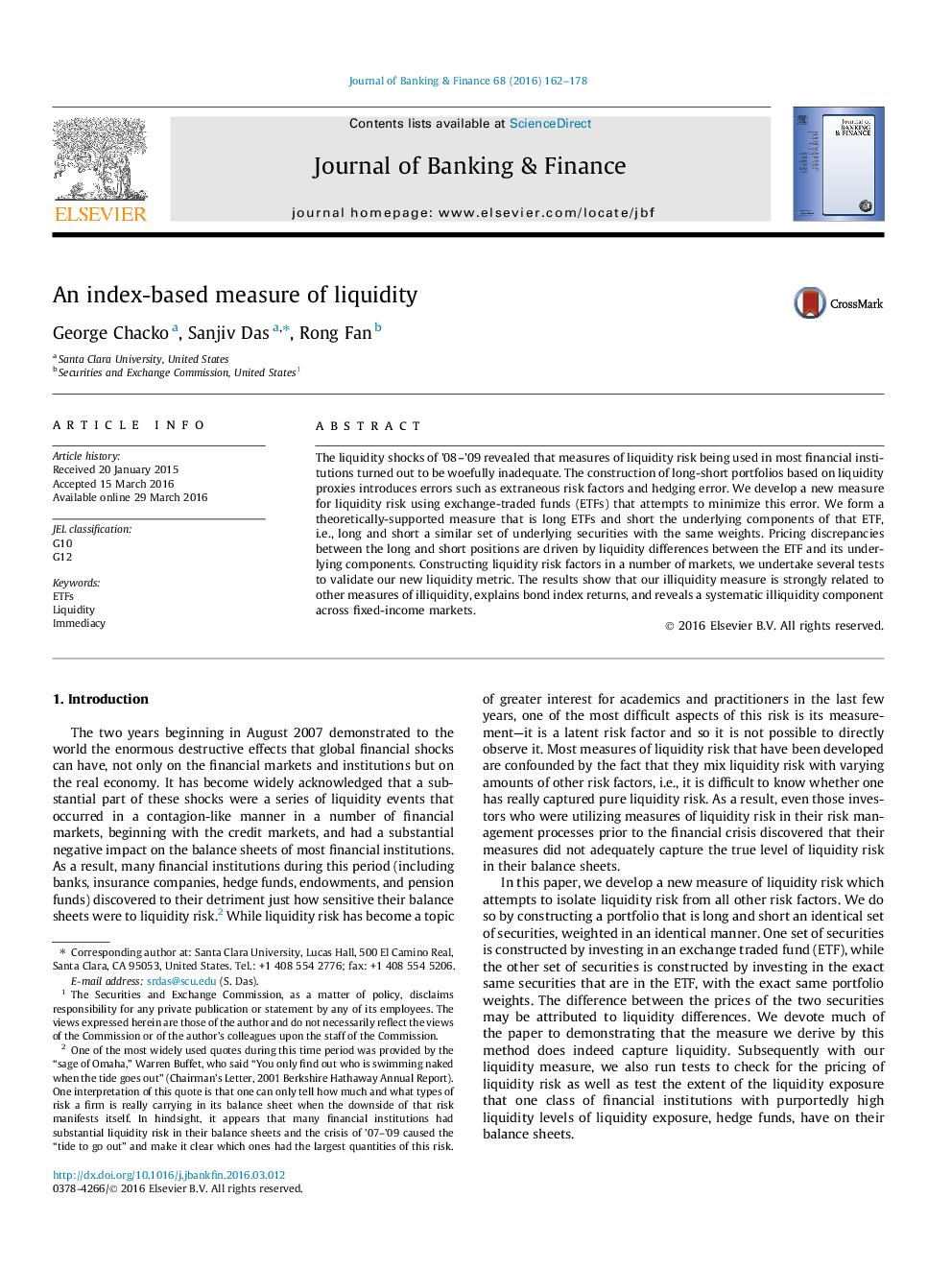| Article ID | Journal | Published Year | Pages | File Type |
|---|---|---|---|---|
| 5088333 | Journal of Banking & Finance | 2016 | 17 Pages |
Abstract
The liquidity shocks of '08-'09 revealed that measures of liquidity risk being used in most financial institutions turned out to be woefully inadequate. The construction of long-short portfolios based on liquidity proxies introduces errors such as extraneous risk factors and hedging error. We develop a new measure for liquidity risk using exchange-traded funds (ETFs) that attempts to minimize this error. We form a theoretically-supported measure that is long ETFs and short the underlying components of that ETF, i.e., long and short a similar set of underlying securities with the same weights. Pricing discrepancies between the long and short positions are driven by liquidity differences between the ETF and its underlying components. Constructing liquidity risk factors in a number of markets, we undertake several tests to validate our new liquidity metric. The results show that our illiquidity measure is strongly related to other measures of illiquidity, explains bond index returns, and reveals a systematic illiquidity component across fixed-income markets.
Related Topics
Social Sciences and Humanities
Economics, Econometrics and Finance
Economics and Econometrics
Authors
George Chacko, Sanjiv Das, Rong Fan,
